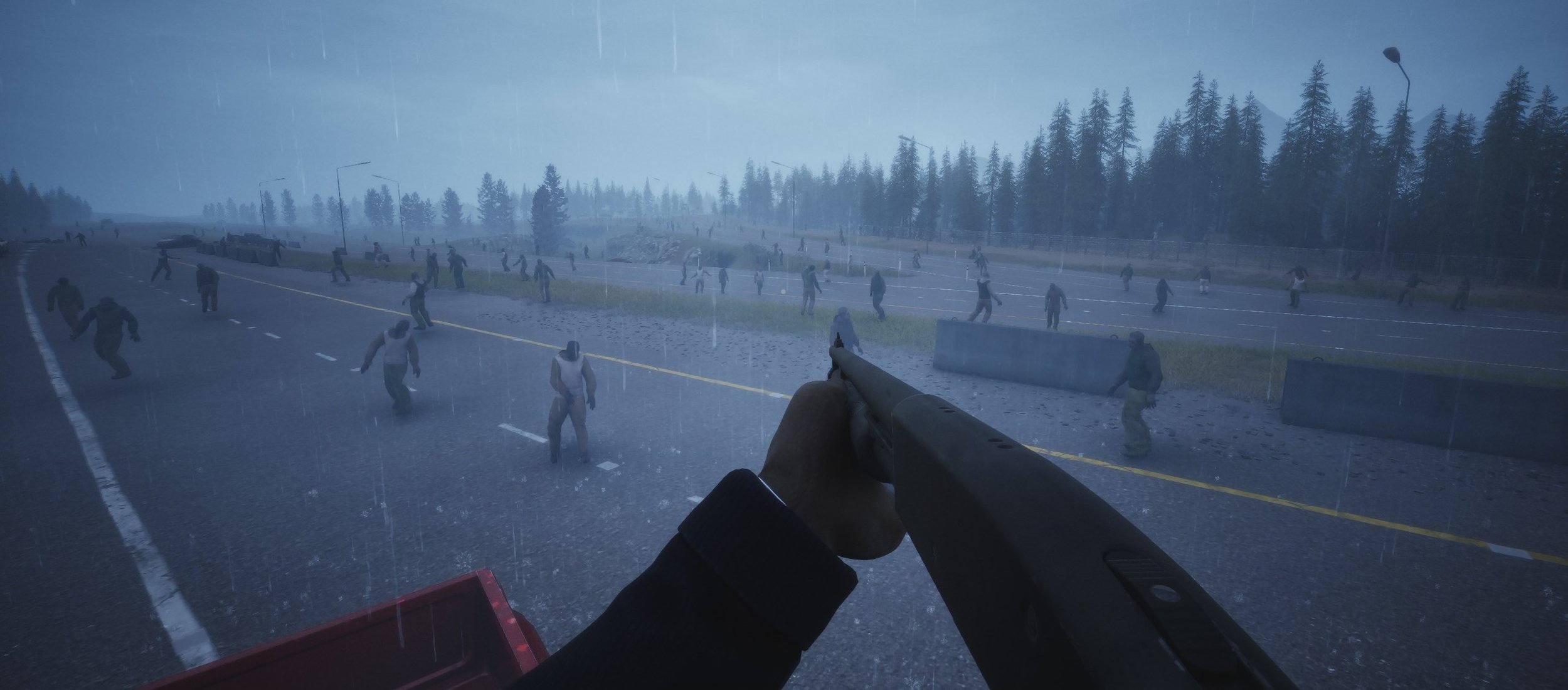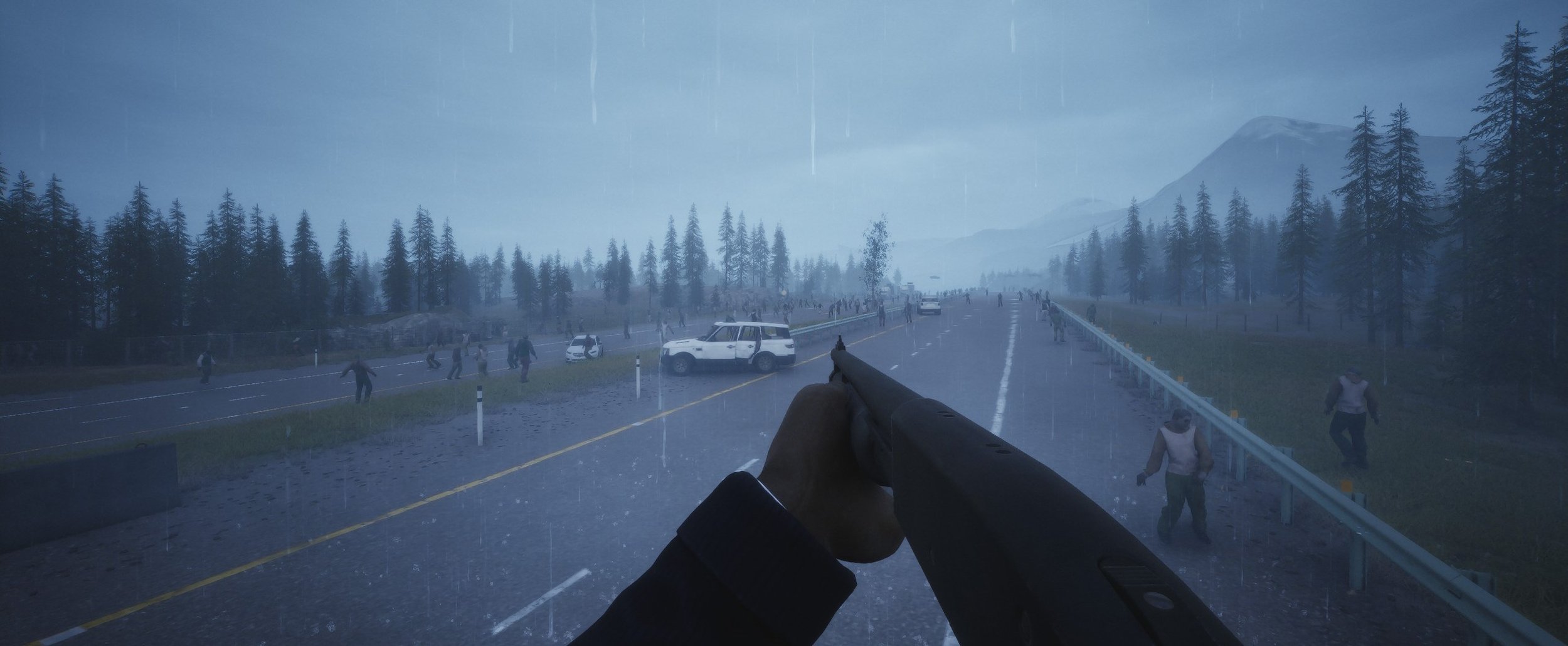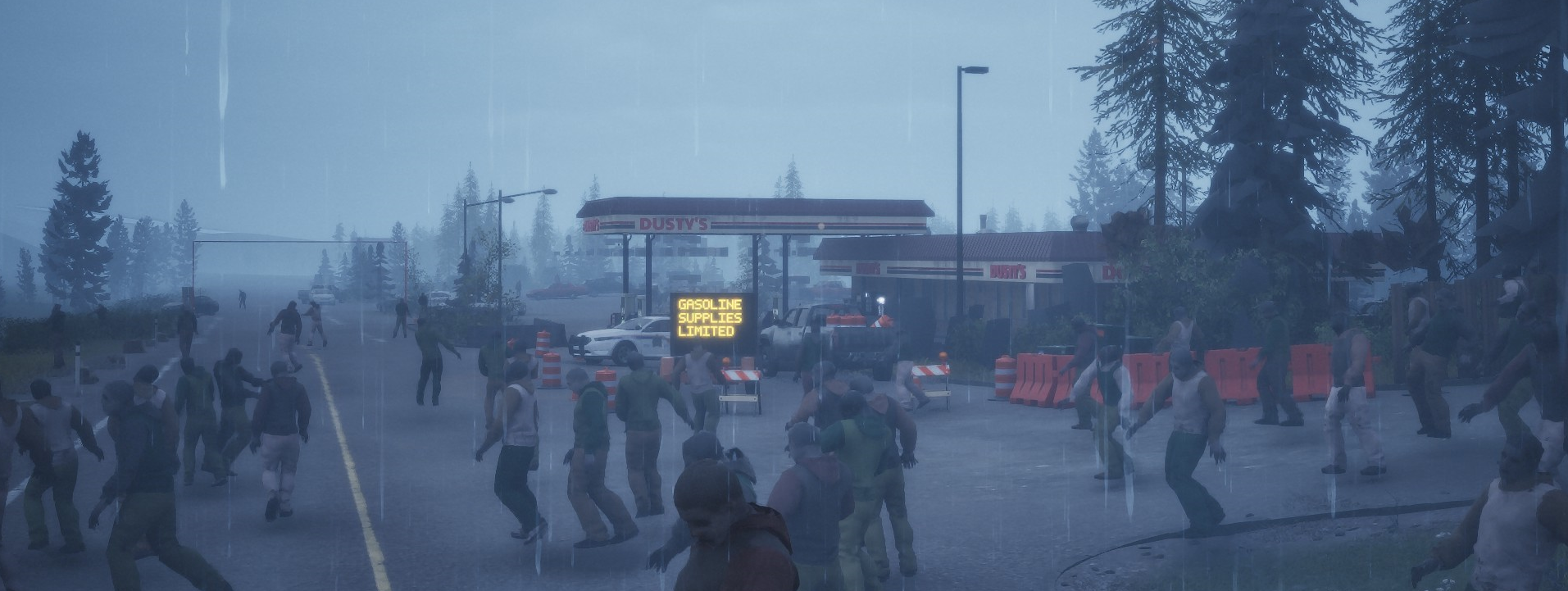MAY 2023 - UPDATE
Hey Survivors!
Welcome to another monthly update! Apologies for the later-than-usual blog post, however, we promise it’s for a good reason. There’s no sense wasting time on the preamble - we’ve got a lot to talk about.
A NEW VLOG!
That’s right everyone - on Friday, June 16th - Dead Matter Vlog 13 is finally coming!
With work on our
new infected system finally reaching a point where we’re just about ready to show them off
our claims system being reintroduced into the game
vehicular gameplay returning
better support for crafting
and widespread map expansions since update 0.10,
we’re finally in a position where we’re ready to provide our backers and supporters with another in-action look at development on Dead Matter.
We had originally intended for this vlog to be released at the start of the month, which unfortunately resulted in a substantial delay in getting this blog post released when a few lingering issues had to be sorted out first. To make up for that delay, we wanted to do a bit of an extra-special blog post, focusing on a bunch of the various things we won’t have time to talk about in the vlog released later this week.
Upcoming EARLY ACCESS release
If you follow Dead Matter, you’re no doubt aware that we have now officially entered our release window for the launch of early access! Now that our work on a bunch of critical systems such as the infected has started to mature, we’re now able to state that we are targeting a final release into Early Access in late August 2023. While we understand that this may disappoint some members of the community, this decision is going to allow us to make sure that Dead Matter is the best possible game it can be at launch.
We’ll continue to keep the community updated as we close on our launch date in August, and further content will continue to be sent out to all of our CA backers during this extended period of development.
CA UPDATE 0.11
And for our CA backers, update 0.11 is still targeted for the end of this month. This update will feature many of the new systems we’ll be showcasing later this week in our vlog, as well as bits and pieces of some of the longer-term content shown in the update below. For more in-depth information on what CA Update 0.11 is going to look like, make sure to catch our vlog when it comes out.
Development update
Since work began on the rewrite of the project that ended up becoming 0.7, one of our biggest goals has been to gradually reintroduce all of the content that we once had in our world space before migrating over to our revamped map. While this was put on hold following 0.7’s release, following the release of update 0.10 our environment art and level design teams have been working on building the map outwards yet again.
That’s why we’re pleased to showcase a short sneak preview of just a selection of the work our LD team has had underway in Canmore. While we’ll be offering up more of a preview of the hamlet of Canmore during the vlog, we couldn’t help but provide a little sneak preview of just some of the work our LD team has had on the go over the last month.



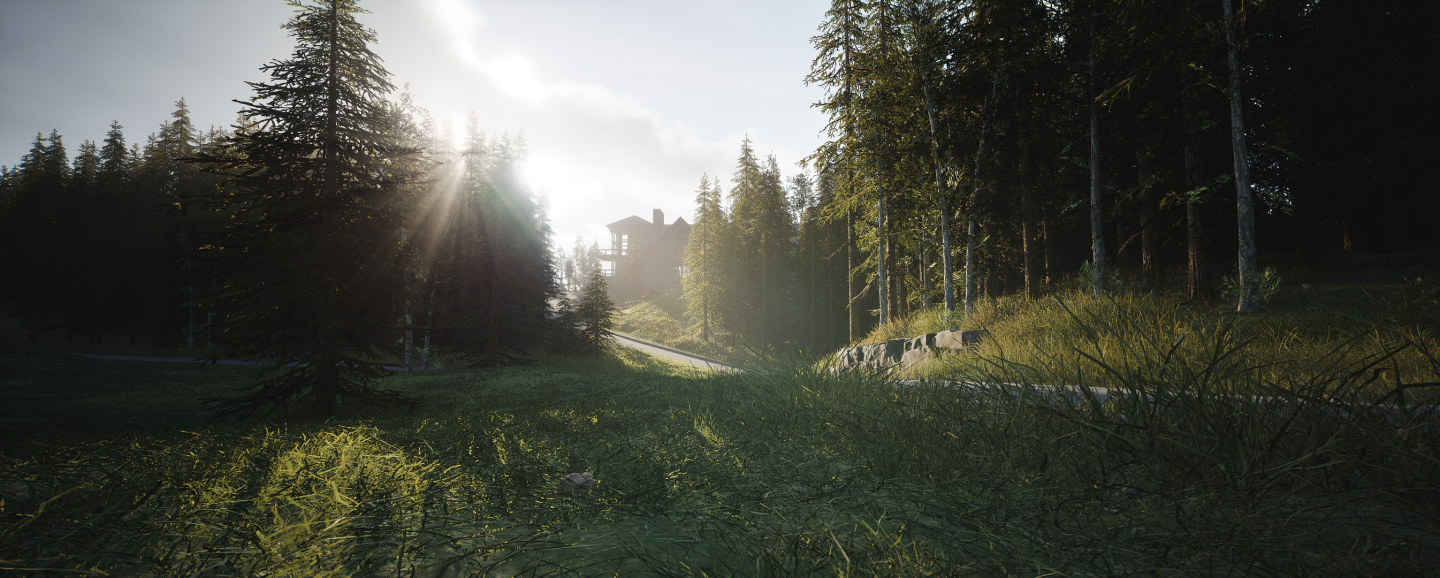

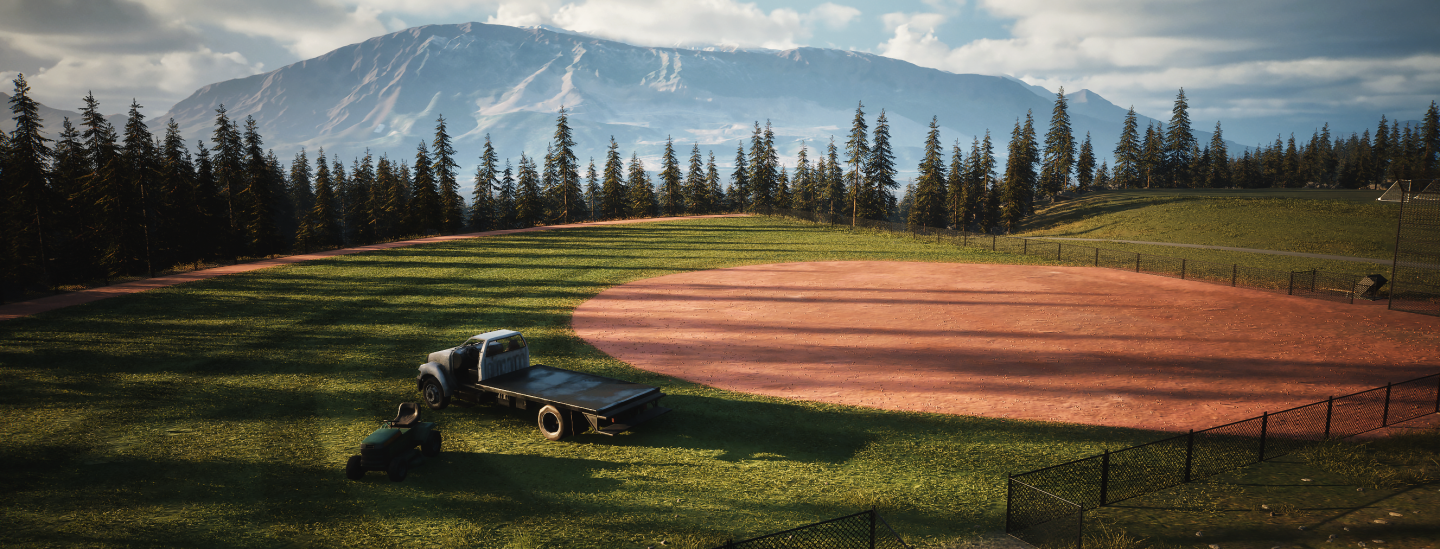
While past work on the map may lead you to believe otherwise, much of the Bow Valley is tourist country. Golf courses, country clubs, travelling societies, and all manner of other recreational organizations make their home in the Bow Valley, especially around the town of Canmore.



Dominated by several golf courses, Canmore itself ends up being a mix of modern and dated, with much growth being driven by the town’s strong tourism industry. Unlike our smaller towns such as Dead Man’s Flats or Exshaw Community (returning in update 0.11, alongside the Exshaw Cement plan,) Canmore is a proper urban center, and survivors will have to be wary of the unique challenges that surviving in such a space - both against the massive hordes of infected, as well as other survivors - brings.



And on top of those locations, work is wrapping up on Saint Bernard Catholic Academy - one of two schools found in the Canmore area. Relatively unscathed due to the collapse happening over the summer break, this former school is certain to become an incredibly valuable base for the group of survivors hardy enough to secure and hold it.



‘Be it for sport or out of malice, bandits have knocked out one of the cell towers that Duke Cartilage uses to keep his Truth flowing to the masses. It’s up to you to track down the junction station, and fix the automatic signal rerouting it once provided.’
While our world team has been continuing to build outwards, our gameplay team has been putting a lot of focus into our weapon and weapon modding gameplay over the last month. While weapon customization and modding has existed in some form since the launch of the closed alpha, until recently it was mostly in a framework state and quite a bit of content has been waiting in the wings to be fully implemented and make its debut.
One of the major components of this was beginning to give our AR family weapons a proper modification pass - while quite a few attachments and modifiable components already existed for these weapons, some portions of our sandbox were somewhat under-developed. So, numerous new AR-flavored attachments - compatible with many of our already-existing weapons - have been introduced to the game over the last month, alongside a selection of generic attachments that can be used across the majority of our weapons.





The C8 IUR is a semi-automatic police carbine, used primarily by the RCMP. One of several new weapon variants that will soon be available in the CA build, it also happens to be a fantastic model for just a small selection of some of the new attachments available for our weapons.
Beyond providing some much needed visual variety, these attachments all can have a fairly dramatic impact on how a weapon handles. Different stocks have their own handling characteristics, and the weight of attachments can become a drawback in situations where agility, weapon handling, or carrying capacity matter most.



Taking the time to better organize the scheme we were using to handle weapon attachments, we’re also able to very easily roll out support for these attachments to the various ‘cousins’ of the AR platform that you can find in Dead Matter. This process is still underway, and the next step will be introducing more room for customization by moving a more generic ‘slot based’ system for all rail attachments.
By moving our weapons away from more strictly defined ‘attachment slots,’ players are going to have far more freedom to customize and mod their weapons - for better or for worse - allowing just about any rail attachment to fit on just about any rail, provided it fits.
Another major portion of this will be introducing further differentiation to how our weapon mods are classified. Currently in Dead Matter, all attachments may be taken off and swapped off of any weapon at any time, anywhere. With the return of claim gameplay in 0.11, future updates will see our weapon attachments spun off into two categories - integral, and quick detach.
Quick Detach attachments are the kinds of attachments you would expect to be able to change out in the field. Adjustable AR stocks, optics, and tactical lasers and flashlights are all examples of this, and will continue to function as attachments have always worked in Dead Matter.
Integral attachments are the core pieces of a weapon. These are your upper/lower receiver, your barrel, your buffer tube, etc. In the most abstract sense possible, these are the parts of a weapon you would expect to need a tool or workspace to disassemble. So, as you might imagine, we’ll soon be introducing weapon workbenches to allow players to have a dedicated space to do that kind of weapon customization quickly and easily.
While this isn’t projected for update 0.11, we wanted to provide this early preview of the weapon workbench interface - in here you’ll be able to enjoy an up-close and personal look at your weapons, and engage in more complex modding such as changing out receivers, modifying fire control groups, or - eventually - even saw off the barrel of a shotgun.
Of course, this also leads into our next topic:
Aside from being able to modify your weapons, the new weapon workbenches will also allow you to perform maintenance on and repair your weapons. This is because we’ll be slowing done the pace of our gameplay in preparation to some of the changes to the infected that we’ll be talking about in the vlog.
As we move forward with introducing more jam animations to the game, we’ll be rolling out support for weapon condition to our roster of weapons to help integrate them into the larger metagame system - this is a foundational step for us to move forward with world decay gameplay, as well as later integrating seasonal gameplay too.
Jamming mechanics can be polarizing at the best of time, which is why we’ve been working to create a system that can help to cause moments of real tension when a weapon malfunctions, without making it tedious or too punishing. To help with that, weapon jamming in Dead Matter is mostly going to be modelling a failure state known as a ‘failure to feed.’
A failure to feed is just a situation where a firearm fails to load a new round to fire. Since this form of malfunction generally doesn’t consume any ammunition, it allows us to focus more on the tension of the situation, instead of outright punishing the player for having a weapon that’s fallen into disrepair.
Full implementation of the jamming system will not be a priority for CA update 0.11, but as more animation content for it begins to make its way into the game, and our workbench system settles into its final form, expect further updates from us on this front.
New Infected System
We saved the best for last. As the lead developer on the project, one thing that I have always said to myself is that I will never allow this game to ship with underwhelming zombies.
One of the longest-held ‘secrets’ at QI Games has been our zombie prototypes, these pictures are literally from 2018. For us, the pressure was on very early on as we used 50 zombies per player as our metric for the minimum amount of zombies present in a given scene in order for the play to be fun. We found this the 50 was the zombie-to-player ratio that gave us the best overall gameplay but was extremely challenging out of the gate.
I often never shared these prototypes with the public because we were concerned that it would raise expectations higher than what we could ultimately deliver. The pictures above are actually from 2018 and haven’t been posted publicly by any of us before. Anyone that’s seen older vlogs may recognize the lighting.
UNREAL MASS
Testing the perception system. I used the car alarms, a flare, my player character and a pile of poo mesh that was in our files for testing their smell.
I tried again with Mass, the new ECS that was added to Unreal Engine and while I was getting pretty okay results, it still just didn’t feel right and performance issues were creeping up and it was leaving me feeling nervous. So while I learned a lot, I ended up scrapping it. Not sure if it was something I was doing wrong, but we were only able to push around 7,000 or so entities before running into performance issues. I don’t feel like I had the time to unwind that ball of yarn.
This all doesn’t probably sound that good, it’s a lot of time spent. But I learned a lot from the time spent on these various prototypes, allowing me to break down what I knew was possible, what I knew was hypothetically possible, and ultimately what I would be able to deliver on. I knew that I wanted infected that could fit the following bill and honestly, I feel that I was finally ready for it.
In An Ideal World…
Performance: I don’t want the infected taking up all of our CPU time on the game thread, doubly so with the server involved. Simulating the players at a lower tick rate or clientside is fun and all but movement doesn’t feel really responsive in our game if the server is barely chugging along.
Numbers: I do not want to compromise on the sheer number of infected. I didn’t want to take the easy way out via cutting the number of infected in the game or doing any more janky bullshit where the infected spawn 10 feet away from any player using a gun.
Clipping: I do not want to see my zombies clip, once in a blue moon doesn’t bother me but crowds of infected zig-zagging through each other is just not my cup of tea, it feels cheap. Our infected that I implemented via Mass suffered from this issue real badly.
Hordes: I really wanted to see infected that could naturally flock together on their own. Definitely a bit of a wishlist item given everything else on the menu.
Efficiency: C++ is an extremely fast language, and modern hardware is extremely capable. Nanite and UE5 as a whole prove this idea. I wanted a system that would take full advantage of modern hardware and with efficiency in mind on the first iteration, even if it’s a little more painful to iterate upon.
Gameplay: I wanted the infected to support gameplay that primarily featured massive hordes of slow ‘Romero-Style’ zombies. While some people say this is the less interesting type of infected and while I agree with them, it’s more about the horde than the infected themselves. We’ve always said that if we could do this style of zombies we would, and here we are.
Pitbull AI
This led to the final iteration of our infected - internally we call it Pitbull, mostly due to an inside joke, we’ll let you fill in the blanks. That being said, we’re actually pretty likely to rename it to something else. Honestly, let us know your thoughts. While there is still a lot of work to be done, Pitbull is finally at a point where it supports most of the essential features that would have been blocking us from being able to ship a patch.
It’s a big part of the reason why this post took a bit more time than we had hoped, we wanted to do a vlog as pictures don’t really do this system any justice. I do feel comfortable talking about it and teasing it since we’ve hit several internal goals such as getting the system to run in a networked environment and on the proper Alberta map, not in a synthetic test environment but in the game itself.
Instanced corpses are highlighted in orange. They are much faster to render than a standard skeletal mesh character simulating ragdoll physics on the ground. They are treated as a single actor in Unreal Engine.
Ragdoll Physics: Pitbull does not like exposing any of its smoke and mirrors, players get a seamless experience as they are able to interact with the infected in the same way as any prior version of the game.
Root Motion: Pitbull uses root motion for its animations to create the authentic look of shambling AI. This is basically the animation driving the velocity of the character to make it look like they are ‘actually’ walking, rather than sliding and playing an animation.
Crowd Rendering: Pitbull handles all of the animation simulations on the GPU, fed by data from the CPU that affords us a high degree of flexibility for playing back animations at key points in time. We have full control, and it’s fast. Due to how efficiently we are rendering our meshes the performance impact that the crowd rendering has overall is negligible when exploring the main open world of Dead Matter.
Corpse Instancing: Pitbull can instance corpses alongside other animated meshes that are being instanced on the GPU, there can be over 8,000+ corpses in a single scene without our crowd representation system breaking a sweat. They can also stack. Have fun with that knowledge.
100% Multithreaded: Pitbull is 100% multithreaded, and uses parallelization as aggressively as possible to ensure that it is fully utilizing modern hardware to its full potential. Pitbull is also an ECS so there are some added performance benefits due to it’s architecture versus using heaps of Unreal Actors.
Network Compression: Pitbull uses some pretty spicy network compression that allows us to replicate large numbers of agents very accurately using a custom algorithm that was designed to work with my vision for replicated root motion. Not only that, but clients don’t even have to run the expensive parts of Pitbull at all on their machines resulting in Pitbull being capable of running on a very wide variety of CPUs.
Zombie Count: I am excited to announce that Pitbull is capable of supporting thousands of zombies all with minimal impact on the performance of the game overall thanks to its multithreading and relatively lightweight networking.
PITBULL IN MOTION
Pitbull still has a bit of a way to go but it’s been seeing steady progress, there’s a laundry list of what we want to do with it and improvements to be made before we launch or even ship a patch. Regardless, we think it’s pretty neat so far and can’t wait to hear what people think of it. I’m excited to show off more on Friday.
- Nik










